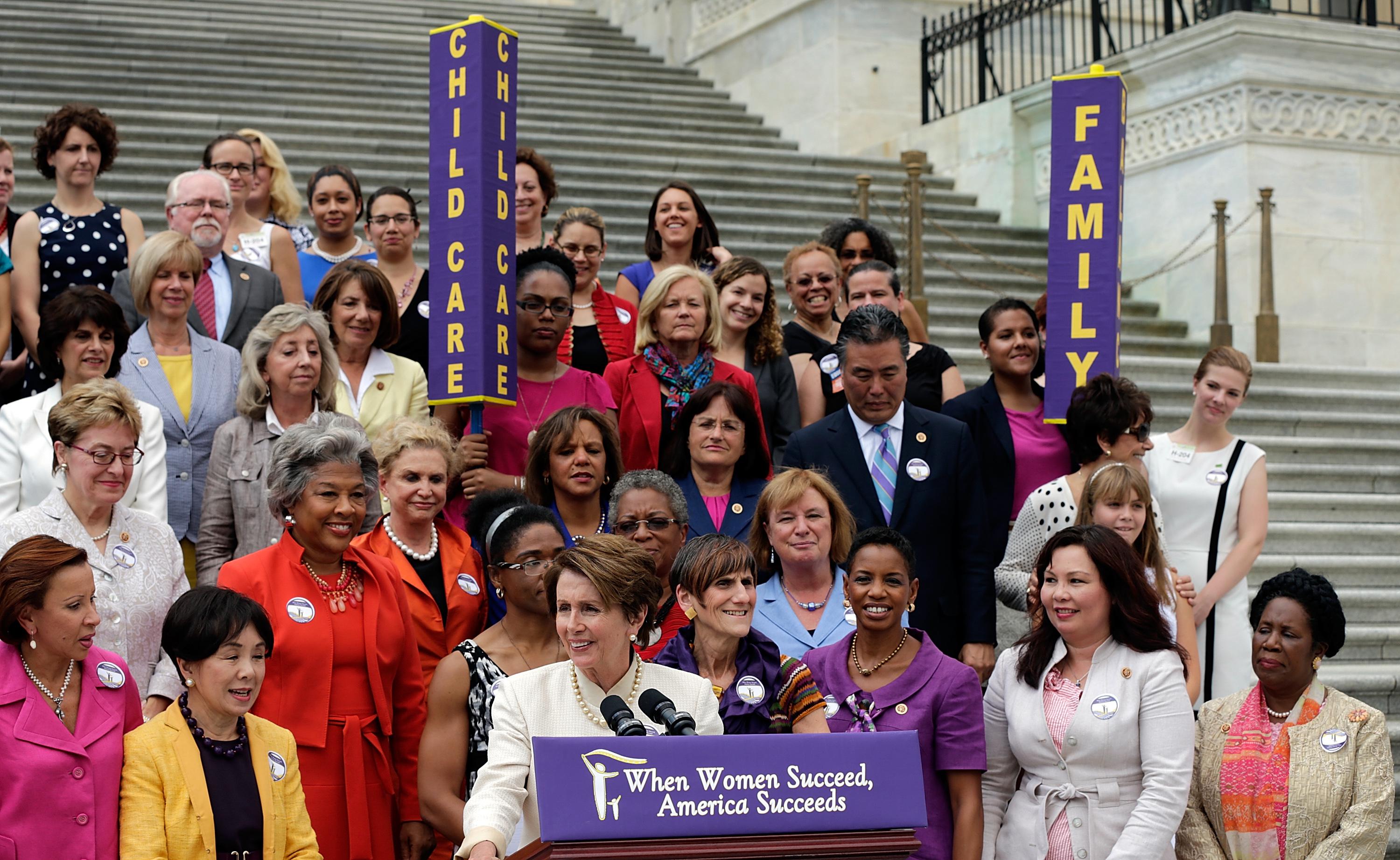Are we looking at more than 100 years before women finally reach parity in Congress? According to a new report out by the Institute for Women’s Policy Research, if nothing changes about how candidates to Congress are pipelined, it will be 2121 before women, who currently make up 20 percent of Congress, finally get up to a full 50 percent.
IWPR found that it’s not enough for the parties to be more accepting of female candidates than they were in the past. Male candidates who run can draw on a long history of men supporting other men, and women who would make good candidates often feel far more on their own. After performing 45 interviews with experienced candidates and officeholders and holding multiple focus groups with other politicians and staff members, IWPR found that women had smaller networks than men to access for funding, faced sexist nonsense while campaigning, and had far less support on the homefront than male candidates, who can often depend on a wife who devotes herself to his career full time.
One thing the researchers did not find is that women lack ambition. “Ambition is not an issue or a deficit with these women,” Denise L. Baer and Heidi Hartmann, the study’s authors, write. “Most women self-recruited for their first office or campaign, and only one in four say others recruited them for their first office.”
That actually may mean that women need to summon more ambition than men in order to get motivated to run, since officials in both parties are doing a bad job recruiting women. “Half (51 percent) of the Achieving Parity respondents report that they had never received a suggestion from a political party leader to run for higher office,” the researchers write. “When asked about power brokers, seven in ten (71 percent) say that no power brokers in their state had encouraged them to run for higher office.” Overall, research shows that women are much less likely than men to have been recruited to run for office by party leaders and activists.
The gender disparity between the parties—the Democrats have a lot more women than the Republicans in Congress—is another major obstacle, because progress on equity will lag if only one party is interested in recruiting more women. The authors do look at some reasons the Democrats are doing a better job than the Republicans on this front. Republican women faced more obstacles to being recruited and building large networks than Democratic women, though both have it worse than men. In addition, “The Democratic Party tends to be pluralistic and polycentric, while the Republic Party is unitary and organic,” write the authors, which is a fancy way of saying the barriers to entry are lower for the Democrats, making it easier for an ambitious woman to get in the door.
One thing the study did not address is the actual political issues that might play a role in representation, likely because IWPR is a nonpartisan organization. But let’s face it: The Democratic Party has successfully positioned itself as a defender of ordinary women’s interests, whereas the Republican Party is perceived as only interested in well-off married women at best, and as the appointed protectors of male dominance at worst. Republicans continue to vote against pro-woman bills protecting equal pay or even bills fighting rape and domestic violence, all while aggressively attacking reproductive health care access on both the federal and state level. While you can always get some women to go along with that, the more overtly pro-woman agenda offered by the Democrats seems to be the sort of thing that will attract more female candidates. This also shows why it’s important not to overrate the impact of parity on the lives of ordinary women. Even if Congress does get to a 50/50 ratio, it won’t do much good if many of those female politicians, like Cathy McMorris Rodgers, Marsha Blackburn, and Virginia Foxx, are against reproductive rights.
